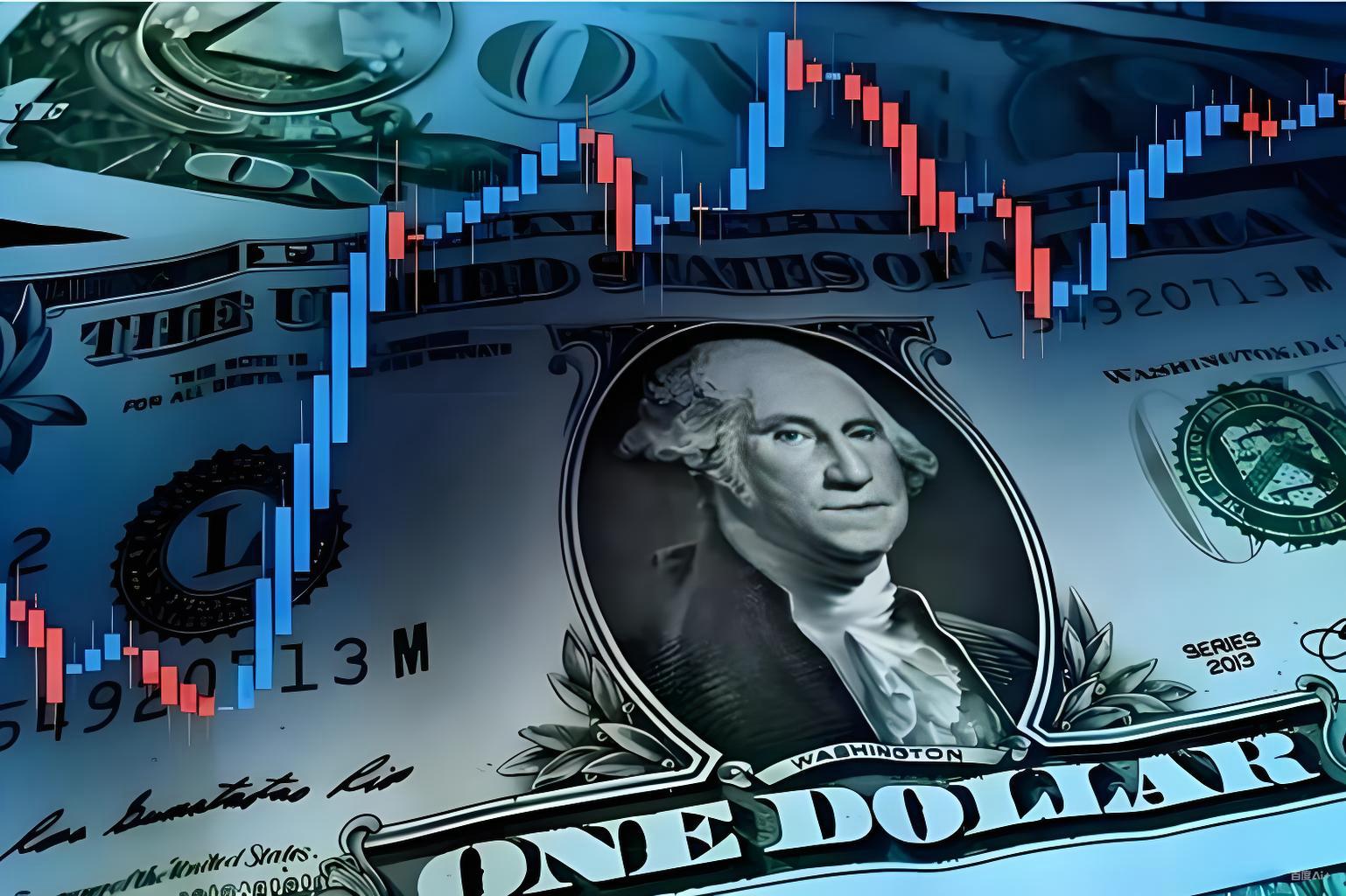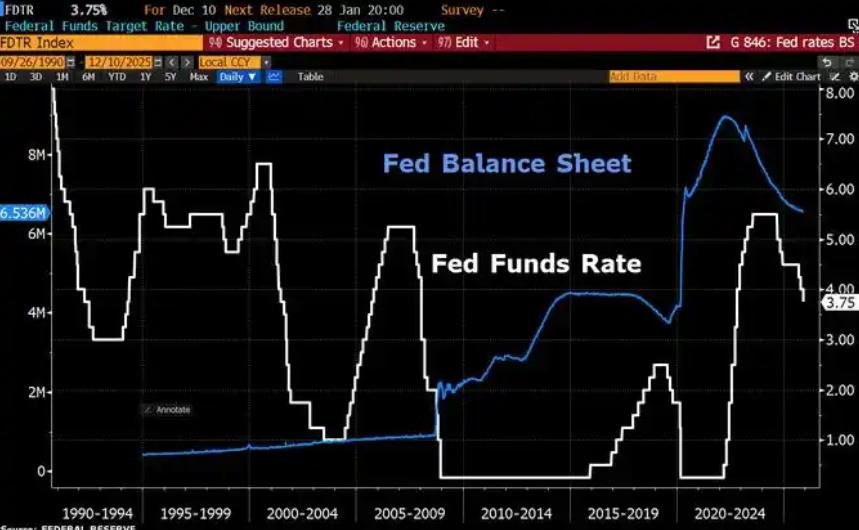
On October 28th, the US market was wrapped in strong expectations of an interest rate cut. As the Federal Reserve's October monetary policy meeting approached, data from the CME Group's FedWatch Tool showed that the market's probability of betting on a 25-basis-point interest rate cut had reached as high as 98.3%. This optimistic sentiment directly pushed US stocks to a new all-time high, with technology stocks leading the rally driven by the AI investment boom. Meanwhile, the yield on the 10-year US Treasury note fell back below 4%, reflecting the market's advanced pricing of the loose policy.
The expectation of an interest rate cut is not groundless. In September, the US Consumer Price Index (CPI) rose by 3.0% year-on-year, and the core CPI (excluding food and energy) also increased by 3.0% year-on-year, both lower than market expectations. This confirms that there is no risk of a rebound in inflation, clearing a key obstacle for policy easing. More crucially, signals from the labor market showed that the US private sector (measured by ADP) lost 32,000 jobs in September, the largest decline since March 2023. The Federal Reserve's "Beige Book" also indicated that employers in various regions generally reduced their workforce through layoffs. Against this backdrop, officials such as Jerome Powell issued "dovish" remarks, expressing concerns about the cooling of the labor market and further strengthening the consensus on an interest rate cut.
However, beneath the market's enthusiasm, a debt alarm has already been sounded. The latest forecast from the International Monetary Fund (IMF) shows that the US government debt-to-GDP ratio will soar to 143.4% by 2030, not only setting a new record since the pandemic but also surpassing that of countries with traditionally high debt levels such as Italy and Greece. More alarmingly, the US annual budget deficit as a percentage of GDP will remain above 7%, ranking first among all high-income countries. As of October 20th, the total federal debt has approached
38trillion,andthefiscalpoliciesoftheTrumpadministrationwilladdanadditional 3.4 trillion to the deficit over the next decade. This cycle of "loose stimulus and debt expansion" is eroding the long-term foundation of the US economy.
On October 28th, the Eurozone economy presented a distinct picture of divergence. As the core engine of the Eurozone, Germany's Business Climate Index edged up from 87.7 points to 88.4 points in October. The recovery of the service sector, particularly the tourism industry, served as the main driver, and the downward trend in new manufacturing orders also showed signs of stopping. More importantly, inflation expectations have continued to decline, providing breathing space for the European Central Bank (ECB)'s policy. The market generally predicts that the ECB will keep its benchmark interest rate unchanged at 2%.
Nevertheless, this positive momentum cannot hide the deep-seated troubles. Clemens Fuest, President of the Ifo Institute for Economic Research in Munich, stated bluntly that Germany is trapped in a "severe economic recession." Businesses' satisfaction with their current operating conditions has declined for three consecutive months, and indicators in the construction sector have even declined against the trend. This implies that the short-term rebound in data is more likely to be a temporary fluctuation amid the recession rather than the start of a recovery, and structural reforms are urgently needed to break the deadlock.
France has become a new risk trigger in the Eurozone. Although specific data have not been released, market concerns about its economic outlook have risen significantly. As the second-largest economy in the Eurozone, France is facing multiple pressures, including declining industrial competitiveness and a high fiscal deficit. Its economic weakness will not only drag down the overall recovery pace of the Eurozone but also may exacerbate regional economic imbalances against the backdrop of the ECB maintaining interest rates unchanged. This divergent pattern of "modest warmth in Germany and cooling in France" will put the Eurozone's monetary policy in a dilemma: easing policy may fuel inflation, while tightening policy may suppress growth.
Overall, the Eurozone and US economic data on October 28th outline a key contradiction in the global economy: the fierce collision between short-term expectations of policy easing and long-term structural risks. If the Federal Reserve cuts interest rates as expected, it will ease pressure on the labor market and support asset prices, but it may further amplify debt risks. Although the ECB's decision to keep interest rates unchanged aligns with the current balance between inflation and growth, it cannot solve the fundamental problem of economic divergence.
For investors, they need to be alert to the mismatch between "policy dividends" and "risk hidden dangers" — the new highs in US stocks are supported by debt leverage, and the modest rebound in Germany's economy cannot conceal the nature of the recession. For policymakers, the IMF's warning is clear: the United States urgently needs to reduce its deficit as soon as possible, and the Eurozone must accelerate fiscal integration and structural reforms. In this game between "short-term growth stabilization" and "long-term risk prevention," the market signals on October 28th may well be an important prelude to a shift in the global economy.

Since 2022, the Fed has cumulatively reduced its balance sheet by $2.4 trillion through quantitative tightening (QT) policies, leading to a near depletion of liquidity in the financial system.
Since 2022, the Fed has cumulatively reduced its balance sh…
On December 11 local time, the White House once again spoke…
Fiji recently launched its first green finance classificati…
Recently, the European Commission fined Musk's X platform (…
At the end of 2025, the situation in the Caribbean suddenly…
The U.S. AI industry in 2025 is witnessing a feverish feast…